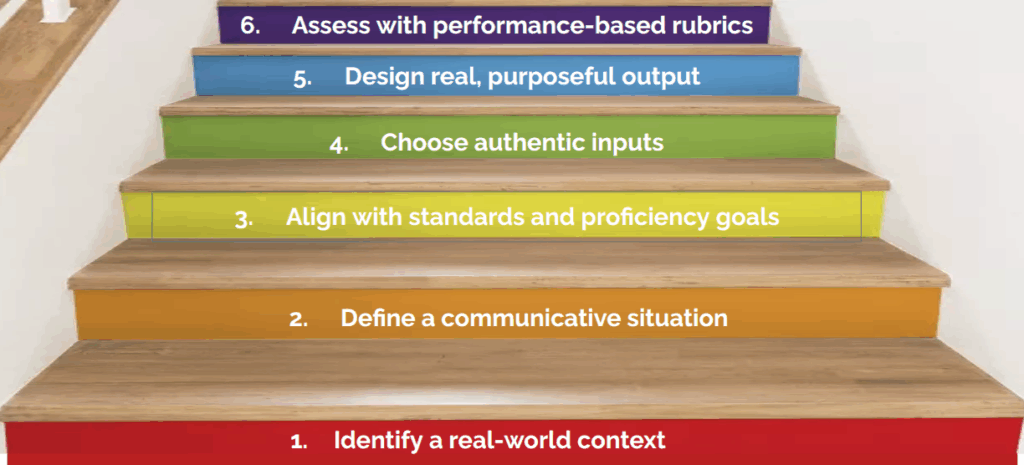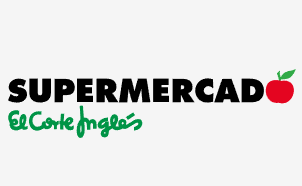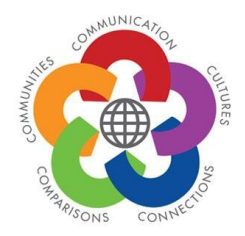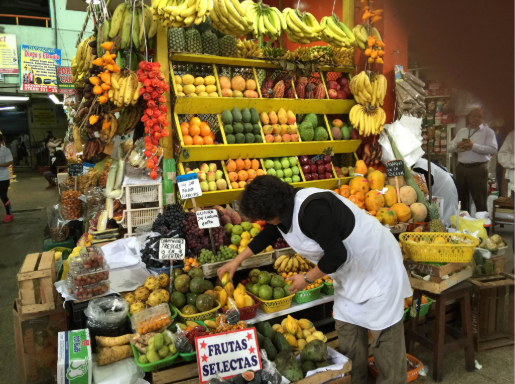by Carmen Reyes (LTL Contributor)
This article is based on one section of my presentation Embedding Real-World Context in Curricular Design, delivered at the Back to School ’25 Conference for Klett World Languages.

World language teachers everywhere share the same challenge: how do we make language authentic, relevant, and motivating for our students? While grammar drills and vocabulary lists may help students memorize forms, they rarely inspire them to use the language beyond the classroom walls.
One powerful solution is teaching through real-world contexts—placing students in situations where language is a tool for solving problems, connecting with others, and creating meaning. Instead of approaching language from the outside as a system of forms and rules, learners experience it from the inside out.
Based on my own experience designing curriculum, I have found that bringing real-world context into the classroom works best when I follow a clear process. Over time, I have designed six practical steps that help connect language learning to authentic situations while keeping lessons structured, engaging, and aligned with proficiency goals.
Let’s explore these six steps for bringing real-world context into your curriculum, using a concrete example: planning and shopping for a party at a grocery store.

Step 1. Identify a Real-World Context
Choose contexts that mirror life beyond school walls. A grocery store is a perfect fit: it’s universally familiar, culturally rich, and loaded with communicative possibilities.
Leverage authentic materials such as supermarket websites:
- wong.pe (Peru)
- bienmanger.com (France)
- Supermercado El Corte Inglés (Spain)



By working with authentic grocery websites, students see real products, real prices, and even cultural differences in shopping habits and food choices
Step 2. Define the Communicative Situation for a Real-World Context
Rather than passively learning vocabulary, students are placed inside a real-world problem:
“You and your classmates are planning a party. Using a budget, you must buy groceries in Spanish. What will you buy? How much can you spend? How do you ask for help at the store?”
This transforms the classroom into a simulation of real life where students:
- Ask and answer questions about prices, quantities, and items.
- Negotiate choices in pairs or small groups.
- Use polite expressions (por favor, gracias, quisiera, necesito) to interact respectfully.
- Manage a budget, reinforcing numbers and currency vocabulary.
The task is social, practical, and full of meaningful opportunities for language use.
Step 3. Align with Standards and Proficiency Goals


ACTFL Proficiency Guidelines (Novice–Intermediate):
- Interpersonal Communication: Requesting grocery items, asking about prices.
- Presentational Speaking: Performing a role-play or presenting a shopping plan.
- Interpretive Reading/Listening: Understanding flyers, labels, or website content.
- Grammar/Vocabulary in Context: Food, numbers, currency, verbs like querer and necesitar, and polite requests.
World-Readiness Standards for Learning Languages:
- Communication: Real exchanges of needs and information.
- Cultures: Understanding cultural practices of grocery shopping and celebrations.
- Connections: Using authentic websites and media to link the classroom with the real world.
- Comparisons: Seeing how shopping practices in the target culture differ from the students’ own.
Step 4. Choose Authentic Inputs for Real-World Context
Students thrive on real input because it shows them the living language, not a textbook version. Some ideas include:
- Grocery websites with product images and prices.
- Flyers or supermarket ads.
- Photos/videos of open-air markets.
- Party menus or packaging from authentic products.

These resources not only build vocabulary but also expose students to cultural perspectives—like why Peruvian markets might sell dozens of potato varieties or why French stores feature cheeses and wines.
Step 5. Design Real, Purposeful Output
Language acquisition sticks when learners produce something with meaning. In this case, students can:
- Create a grocery list with items for a chosen type of party (birthday, picnic, holiday).
- Write a short dialogue simulating a shopping interaction.
- Role-play buying groceries, practicing questions and polite requests.
- Present their “party plan” orally or in writing, justifying food choices.
Example:
“Para la fiesta de cumpleaños necesitamos un pastel, tres refrescos, y frutas. Compramos en Wong porque los precios son buenos.”
This output is purposeful, contextual, and fun—students are not just learning words, they’re planning a celebration in another language.
Step 6. Assess with Performance-Based Rubrics
Rather than focusing on grammar accuracy alone, measure success through communicative effectiveness. Criteria may include:
- Use of target vocabulary (food, numbers, polite expressions).
- Ability to ask/answer basic questions.
- Collaboration and participation in the role-play.
- Clarity in presenting their shopping plan.
A simple rubric with categories like Interpersonal Communication, Vocabulary Use, and Cultural Understanding keeps assessment meaningful and aligned with ACTFL.
Why This Works

When students learn through real-world contexts, they begin to see the target language as a living, breathing tool for communication. They gain confidence because they know what to say in a situation that feels real. At the same time, they’re exploring cultural practices and making connections to their own lives.
The grocery-store project illustrates how purpose, culture, and communication can come together in one unit:
- Purpose: Plan and purchase for a real event (a party).
- Culture: Explore food practices in Spanish- or French-speaking countries.
- Communication: Use the language actively to solve problems and share ideas.
As teachers, our challenge is to open the classroom door to the world beyond, giving students the gift of authentic communication and the confidence that comes with it.
